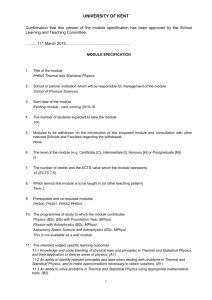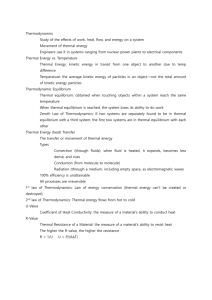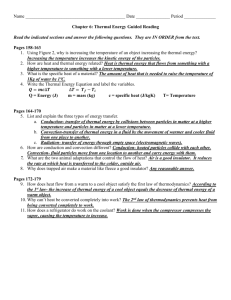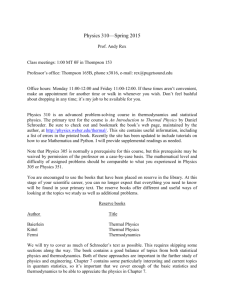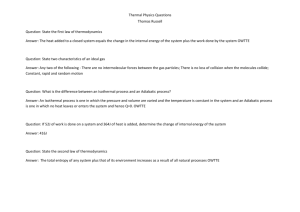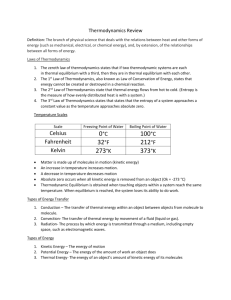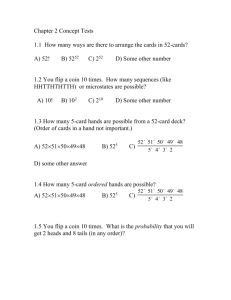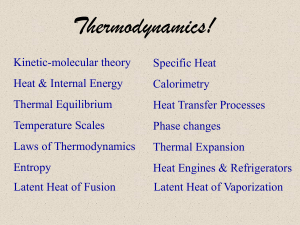Lesson 35 notes – Heat and Temperature - science
advertisement
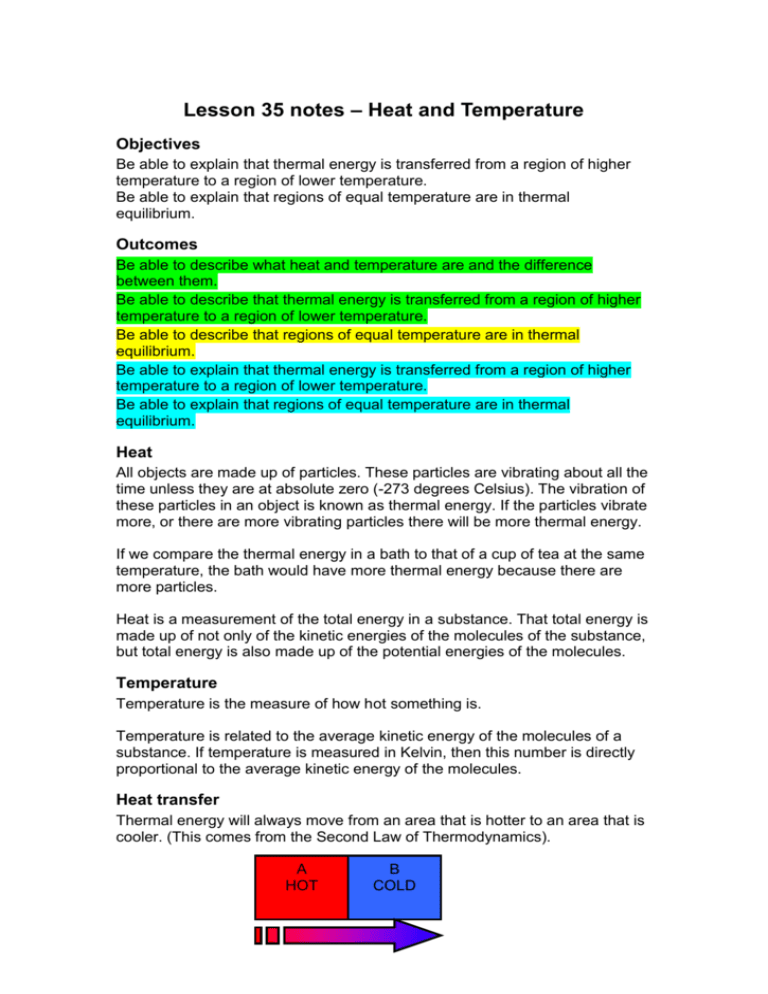
Lesson 35 notes – Heat and Temperature Objectives Be able to explain that thermal energy is transferred from a region of higher temperature to a region of lower temperature. Be able to explain that regions of equal temperature are in thermal equilibrium. Outcomes Be able to describe what heat and temperature are and the difference between them. Be able to describe that thermal energy is transferred from a region of higher temperature to a region of lower temperature. Be able to describe that regions of equal temperature are in thermal equilibrium. Be able to explain that thermal energy is transferred from a region of higher temperature to a region of lower temperature. Be able to explain that regions of equal temperature are in thermal equilibrium. Heat All objects are made up of particles. These particles are vibrating about all the time unless they are at absolute zero (-273 degrees Celsius). The vibration of these particles in an object is known as thermal energy. If the particles vibrate more, or there are more vibrating particles there will be more thermal energy. If we compare the thermal energy in a bath to that of a cup of tea at the same temperature, the bath would have more thermal energy because there are more particles. Heat is a measurement of the total energy in a substance. That total energy is made up of not only of the kinetic energies of the molecules of the substance, but total energy is also made up of the potential energies of the molecules. Temperature Temperature is the measure of how hot something is. Temperature is related to the average kinetic energy of the molecules of a substance. If temperature is measured in Kelvin, then this number is directly proportional to the average kinetic energy of the molecules. Heat transfer Thermal energy will always move from an area that is hotter to an area that is cooler. (This comes from the Second Law of Thermodynamics). A HOT B COLD After a time A and B will reach the same temperature. Thermal Equilibrium will be reached at a temperature somewhere in between HOT and COLD. This temperature will depend on the heat capacities (see lessons 38 and 39) of the objects A and B. This assumes thee is no other heat loss in the system. A WARM B WARM No further heat transfer between A and B occurs when they are at the same temperature. The Zeroth Law of Thermodynamics When two systems are put in contact with each other, there will be a net exchange of energy between them unless or until they are in thermal equilibrium, that is, they are at the same temperature. While this is a fundamental concept of thermodynamics, the need to state it explicitly was not perceived until the first third of the 20th century, long after the first three principles were already widely in use, hence the zero numbering. Extension The First Law of Thermodynamics states that energy cannot be created or destroyed; rather, the amount of energy lost in a steady state process cannot be greater than the amount of energy gained. This is the statement of conservation of energy for a thermodynamic system. It refers to the two ways that a closed system transfers energy to and from its surroundings – by the process of heating (or cooling) and the process of mechanical work. The rate of gain or loss in the stored energy of a system is determined by the rates of these two processes. In open systems, the flow of matter is another energy transfer mechanism, and extra terms must be included in the expression of the first law. The First Law in equation form as it applies to a gas is: Increase in internal energy (dU) = Heat energy supplied (dQ) + Work done on the gas (dW) The Second Law of Thermodynamics states that the entropy of an isolated system not in equilibrium will tend to increase over time, approaching a maximum value at equilibrium. In other words the second law states "energy systems have a tendency to increase their entropy rather than decrease it." This can also be stated as "heat can spontaneously flow from a highertemperature region to a lower-temperature region, but not the other way around." Entropy: a thermodynamic quantity representing the amount of energy in a system that is no longer available for doing mechanical work. The fundamental idea of an increase of the entropy of a system can give us a way of checking the passage of time. Physicists call this the 'arrow of time' that tells us that time is passing and in 'which direction'. For example if you watch a film of a pile of books falling over it is easy to tell if the film is being run backwards since in only one case is the entropy or disorder increasing. Mixing hot and cold water to give a beaker of lukewarm water shows an entropy increase - you would not expect the lukewarm water to 'unmix' itself! Notice the word 'isolated' in the Second Law. Intervention is 'not allowed' to rebuild the pile of books. However even with human help it is not easy to see how we could 'unmix' the water. The third law of thermodynamics is a statistical law of nature regarding entropy and the impossibility of reaching absolute zero of temperature. The la states that: As a system approaches absolute zero, all processes cease and the entropy of the system approaches a minimum value.


